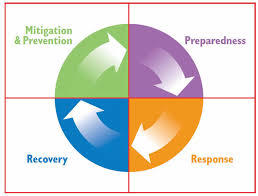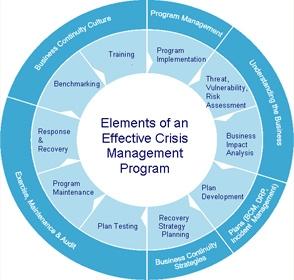Case analysis
It has come to our attention that a particular media house is planning to unleash an unacceptable dossier that can destroy our credibility. According to our informers, these allegations are scheduled for publication in the next two weeks. We all know how much negative publication of such a magnitude could cost the company and ultimately the entire industry. According to our informers, the journalist alleges that she has evidence that links our company to unethical activities overseas. If this comes out to the public, our company will be held in contempt by most of our clients which could be very disastrous.
In addition to that, the journalist also has confirmed that she evidence to show that the company has been engaging in unfair and unsafe employment practices. This is also very damaging if it reaches the public and we are all aware some of our employees will be happy to testify and help the company to sink further. In light of these unfolding unfortunate scenarios, the most prudent action would be to come up with a contingency plan to help the company retain its reputation. Since the publication has not been made yet, we are safe at least for the next 14 days. A crisis management plan is possible in the grace period that we have before the publication is made public.
Currently, our products have been of high quality and we have never earned a name in the industry for our commitment to satisfy our clients. Our employment terms and condition are also well stipulated in our contract forms. The contract is clear about the company’s responsibility incase of any injuries on employees while on duty. These are some of the potential defenses that we have. However, the case of the engineering casual labor may get us in trouble because we did not compensate his benefits in full and also he was dismissed unfairly. This could be one of the bases that the journalist might lay her report upon.
SWOT analysis
In response to the threat posed by the reporters claim, need to be sure of the areas where we can capitalize on our innocence and areas where we must take responsibility. In order to establish these areas, I came up with a simple list of SWOT analysis to help us in rolling out a contingency plan.
Strengths
- We are a globally reputable company
- We have been in business for more 3 decades without any scandal
- We have global endorsement by globally acknowledged teams (Manchester United )
- We are the official suppliers of sports foot wares for the FIFA world cup 2014
Weaknesses
- We have fired close to 20 employees unfairly in the last one decade
- We have set up manufacturing plants overseas mainly in Africa
- We are les public about our operations
- Our customer care desk is hardly accessible
Opportunities
- Taking responsibility and publishing an apology article before the damning report is made public
- Persuading our employees to defend the company
Threats
- We stand a risk of losing operating license if the workers union decides to sue the company
- Most of our endorsements might be revoked due to negative publicity.
- The chances of getting the tender o supply FIFA with foot ware in 2018 may be compromised.
Plan objectives
The objectives of this crisis planning are to avert the negative publicity that the allegations can cause the company. The objectives include;
- Controlling the damage
- Taking responsibility for our actions
- Providing a solution for our problems
- Influencing the public’s opinion through publicly accepting our faults
- Showing our displeasure in our failures
- Promising to improve on our failures
The diagram below shows the process that will be followed in dealing with this crisis.

Strategy
Understanding that a good name is important in our business, we should get more concerned with controlling the damage than stopping the publication. Apparently, even after persuading the concerned journalist to furnish me with the details of her evidence and her source, she was adamant that it would ruin her case against us. Evidently, the journalist is not interested in knowing the truth. It seems like she may have been waiting for this moment to bring this company down and we may not know who else is involved in this chain of conspiracy. Therefore, we need to control the damage and respond before the journalist attacks. The following chart can help us come with a relevant strategy that will influence our success in this crisis.

Since it is an accusation of our past activities, we may begin by claiming responsibility and offering an apology to the victims of our actions. With regard to the 20 or so fired employees, we should begin by clearing their full compensation and paying up their benefits. This will remove the guilt of our unfair actions and we might build trust and gather empathy form the public for being honest. Honesty as they say is a virtue and this may go a long way in redeeming our reputation. We also should plan on the best way to water down the claims of unsafe working conditions. This should be included in a statement that will be read in a press briefing before the end of the week.
The holding statement
The statement should incorporate and express our regrets to have failed in adequately protecting the lives of our esteemed workforce. In the press briefing, we must also indicate our intentions to roll out a tender for the purchase of protective gears and other safety equipments. This will be a way of accepting our failures and also committing ourselves to creating a solution to the problem. The public will not consider the harms that our employees have been going through in the past but they will be content that the harms will no longer be a threat. Those are objective aimed at controlling the reactions from the public.
Timings
Short-term
Other than hand, we also have the workers to please. In order to gain their support and since they do not know the threat we are facing yet, we can start by buying them safety gears immediately. This will stimulate their excitement which a major objective of this plan. We need to make the employees happy so that they can defend the company when the damaging report is published in two weeks time. In regard to the overseas allegations, the objective is to distance ourselves from the daily running of our plants in those countries. This is possible because we do not micromanage those plants.
Long-term
The management and daily running of these plants is solely the responsibility of the local managers. In this regard, we can express our regret that our associate plants have been culprits in unethical disposal of waste material and offer a public apology with a promise to look into the issue. Good phrase to use at this point is the proverbial “heads must roll” expression to create an impression that the company is saddened by these actions. This will give us some credit and offer us the opportunity to be more professional and ethical in dealing with our waste products. The idea is to be active in redeeming the company’s image rather than being reactive and defensive.
Stakeholders Matrix
Influential people
- Donors
- Endorsers
- Political leaders
Middle level influential people
- Managers
- Distributers
- Shareholders
- Directors
- Customers
Low level influential people
- Subordinate staff
- Suppliers
Target groups
In order to counter the implications that the publication may cause the company, we need to identify our target groups. These are the people that will be directly affected by the report. Form within the company, we must inform the CEO, the board of directors and the shareholders. This group needs to be aware of any activity that the company is getting involved in so that they can sanction our action plan. In addition, the heads of departments and leaders in the different teams within the work forces must also be targeted in this plan.
These are the people who can influence the rest of the staff members to defend the company’s position when the allegations come out in public. Externally, the report will target the suppliers, clients and the general public. Suppliers will be hesitant to continue their cooperation with the company due to the negative publicity. This can hurt the company’s ability to be productive and run smoothly. If we do not react in away to impress our clients, our lucrative tenders such as the world cup’s supply can easily be taken away.
Tactics
To come out of this crisis successful the following tactics will be used;
- We will constantly engage with the journalist to get the information she has
- We will closely monitor her activities especially in the social media in order to come up with the best responses
- We will also try to find a weakness in the journalists’ claims and also on her reputation with regard to her prior activities
- We will also be active on our social medial platform to respond to any questions that our client may have regarding the matter or for clarification
- We will be very careful to listen to what people have to say in response to our owning up strategy and about the allegations on social media
- Our customer care desk will be restructured and upgraded to respond to queries 24 hours a day, seven days a week
- Our responses to customers’ inquiries must always be informed to avoid giving wrong information that can be used against us. Is a question that we do not have an answer to is asked, we will respond “no comment”. It is better to say nothing than to say the wrong thing.
Conclusion
We all do not like being associated with a negative image and this can have significant implications on our company. In addition the aforementioned external stakeholders, the distributors are also very crucial to the business. When the sales and demand for our products will be affected by the negative publicity, our distributors will decline cooperating with the company due to the reduced sales volumes. Others will include the government, human rights groups, the United Nations agents, health organizations as well as trade/workers unions.